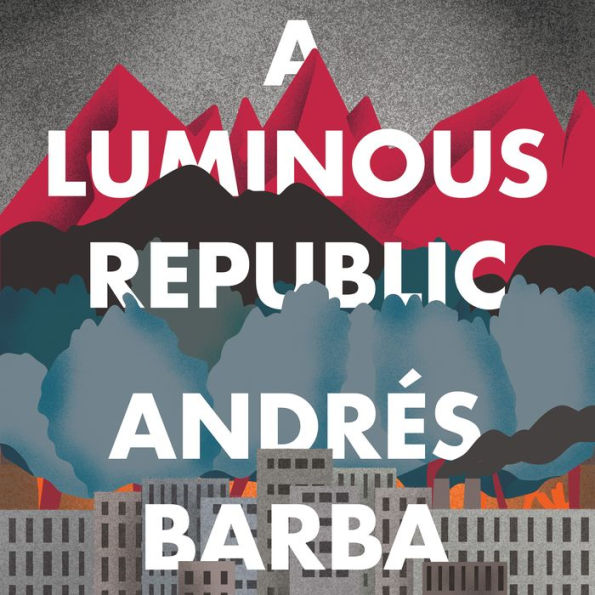Publishers Weekly
12/23/2019
Wild children upend a city on the edge of the jungle in this lyrical, chilling novel from Barba (Such Small Hands). After marrying an older woman with a nine-year-old daughter named Maia, the unnamed narrator moves with them to the woman’s hometown of San Cristóbal in an unidentified South American country in the mid-1990s, where he lands a job as a civil servant. The narrator looks back from the present on his initial years in the provincial city two decades earlier, defined by the emergence of a violent group of child beggars that unsettles the bourgeois population. As the narrator’s employer, the Department of Social Affairs, founders in its attempts to address the situation, the children’s encounters with law enforcement turn aggressive, leading to the death of an officer by friendly fire during a scuffle, after which the children go into hiding. Paranoia over the children’s threat to society intensifies when other children begin deserting their families to join the feral mob. Maia’s biological father adds to the pressure campaign to find them after his 12-year-old son disappears, leading the narrator to a series of extremely difficult choices. The civil servant’s guilt and ongoing perplexity over what happened sharpens the impact of Barba’s spare, philosophical narrative. This frightening picture of the strangeness of childhood will endure. Agent: Sandra Pareja, Casanovas & Lynch. (Apr.)
From the Publisher
Winner of the Premio Herralde A Wired Must-Read Spring Title A Millions Most Anticipated Title of 2020 A Lit Hub Most Anticipated Title of 2020 A Lit Hub Best Book of April A Tor.com Best Book of April "One pleasure of the novel derives from the way its eerie events are addressed in such a matter-of-fact tone...At the same time, allusions to fairy tales and folklore are an essential part of the picture, making the book something much more otherworldly than an issues-centric social critique. Translator Lisa Dillman captures both the docudrama tones and anarchic threats of the story with perfect facility...The final moments of revelation make for a highly cinematic set piece, but they’re seriously rivaled by the pleasures throughout the book of being steeped in the way its narrator’s mind works...A Luminous Republic, in addition to being a captivating piece of storytelling, is a primer on the manner in which we perceive and create our own realities. Barba is especially beguiling as he ponders the way that playfulness, performance, and social conformity create our sense of who and what we are." —Boston Globe "Barba has displayed an enviable gift for conveying, through an inventively abstract style, the strange worlds of childhood and early adolescence." —New York Times “A Luminous Republic has all the stark power of a folk-tale or a fable. It also raises concerns that are pressing and contemporary—about the function and source of language, about pu"blic paranoia and hysteria, about the idea of community and how information spreads. At the book’s center is a moving personal story about memory and loss. The narrative is engaging, at times playful, wholly compelling.” —Colm Tóibín, New York Times-bestselling author of Nora Webster and Brooklyn “A Luminous Republic is a terrifying masterpiece. To lay bare with such stunning precision the nature of self-obsession – the viciousness with which any one of us might respond to that which we don’t understand – marks Andrés Barba as a writer of extraordinary talent. He has created a small, simple story and within it buried immense complexity and truth.” —Omar El Akkad, bestselling author of American War "[An] inverted-colors fairytale." —Wired "A wonderfully creepy and authentically different example of Modern Weird, and admirers of John Langan, Paul Trembly, Laird Barron, and, yes, J.G. Ballard will find much to excite their affections here...[A] lulling, judicious, cerebral yet emotive first-person voice...We will be watching events long resolved, through the scrim of time. But as we shall soon learn, this does not diminish the horror, but gives it a clinical heft...The narrator takes time to sketch a portrait of San Cristóbal in bright details, making the place solid to our senses. Its river, the surrounding jungles, the indigenous tribal members, the architecture, the citizens—all are limned economically and with real substance. This allows the weirdness, when it comes, to stand out in vivid contrast...Barba’s prose relies heavily on rich and poignant aphorisms from its sensitive and self-doubting narrator. I could quote endlessly...And Barba’s precision in describing the weather of the psyche—both the narrator’s and those of the populace and the wild children—takes the reader on a rollercoaster of feeling...It’s this kind of forceful symbolic language embedded in action that imbues what might otherwise be a simplistic tale of bad-seed kids wi —



